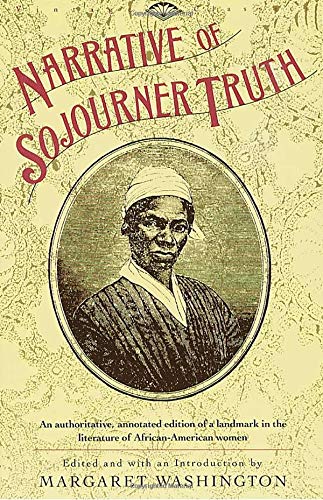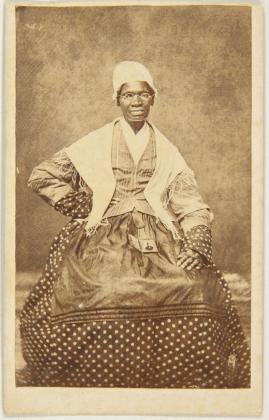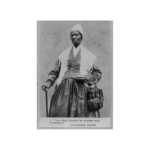Sojourner Truth was an abolitionist and women’s rights activist born into slavery in New York in the late 18th century. She escaped from slavery in 1826 and became a well-known speaker and advocate for the rights of African Americans and women.
Truth was a crucial player in the abolitionist and women’s rights movements. She is most known for her speech “Ain’t I a Woman?” which is one of the most important speeches of the 19th century.
Truth was an important figure in the history of the United States, and her legacy continues to inspire people today. Here are 10 facts about Sojourner Truth that everyone should know!
1. She was born into slavery in New York around 1797.
Isabella Baumfree was born into slavery in New York in the late 1700s. When she was just a young girl, she was sold at auction to a man named John J. Dumont. Isabella worked hard for Dumont, but she was often mistreated and abused. In 1826, she escaped to freedom with her infant daughter.
2. In 1843, she changed her name from Isabella to Sojourner Truth.
When Isabella was 13 years old, she was sold at an auction with other slaves. This was the last time she would be called by her “slave name.” From then on, she would be known as Sojourner Truth.
3. Truth was illiterate throughout her life.
As were many black people and women her age, Sojourner was illiterate. “The Narrative of Sojourner Truth,” her autobiography, was published in 1850. Olive Gilbert, a friend of Sojourner, used the dictation of her memoirs to write the book.

4. Sojourner Truth was an abolitionist and a women’s rights activist.
Sojourner Truth was an African American abolitionist and women’s rights activist. After the war, she continued her work for women’s rights and helped to found the American Equal Rights Association.
5. In 1851, she delivered her famous “Ain’t I a Woman?” speech.
As well as being a dedicated campaigner, Sojourner Truth was also an inspirational speaker. During the 1850s, Truth became an itinerant preacher and traveled throughout the Northeast and Midwest. She also spoke at abolitionist and women’s rights conferences. In 1851, she delivered a speech at the Ohio Women’s Rights Convention in Akron, Ohio, that became known as “Ain’t I a Woman?” In this speech, Truth countered the common belief that women were inferior to men. She talked about the struggles of being a black and white woman. Her name change symbolized her new identity as a free woman and an advocate for justice.
6. She was also the first African American to win a court case against a white man.
In 1828, she created legal history by becoming the first Black woman to successfully defend a family member’s freedom in court against a white defendant. Truth discovered that her five-year-old son Peter was sold by Dumont and then forcibly transferred to a person in Alabama. She approached the New York Supreme Court with the Van Wagenens’ assistance. She sued Peter’s new owner Solomon Gedney under the alias Isabella van Wagenen. After protracted legal battles, she finally received her son in 1828. Truth’s accomplishment in freeing her son Peter broke legal conventions, confronted gender preconceptions, and went down in American history.
7. She Used Photography to Help End Slavery

She was one of the first Americans to use photography to increase her fame and support herself. Truth utilized photography to aid in the abolition of slavery, and now a new exhibition at the Berkeley Art Museum and Pacific Film Archive details this. The exhibition, Sojourner Truth, Photography, and the Fight Against Slavery, showcases the photographs. They were also utilized as an early type of photographic advertising.
8. The beating of her enslaved lover haunted Sojourner Truth her entire life.
In about 1815, Robert, an enslaved person from a nearby plantation, and Truth started dating. Charles Cation, the owner of Robert as a slave, forbade the relationship outright since he would not be the father of any children they had. However, they met. Unfortunately, Cation discovered them and severely beat Robert, his slave. Robert later passed away from his injuries since the beating was so vicious. Truth was haunted by the upsetting event for the rest of her life. Afterwards, she was instructed to wed Thomas, a slave who was 20 years her senior.
9. She was a preacher
Sojourner Truth was a Christian who did missionary work in New York City and was associated briefly with a Christian community led by a dynamic leader. Later, she started as a traveling preacher and said God had given her a new name: Sojourner Truth.
She believed that all humans are equal in God’s eyes, and that we should live together in peace and harmony.
“Does not God love colored children as well as white children? And did not the same Savior die to save the one as well as the other? If so, white children must know that if they go to Heaven, they must go there without their prejudice against color, for in Heaven black and white are one in the love of Jesus.”
Sojourner Truth
10. Her last words were, “be a follower of the Lord Jesus.”
At her home, Truth passed away on November 26, 1883. Some records show her age was 86.Her memorial tombstone states she was 105 years old, while records indicate she was just 86. The words “Is God Dead?” that she once asked a discouraged Frederick Douglass to encourage him to have faith are inscribed on her headstone.
Conclusion
In conclusion, Sojourner Truth was a remarkable woman who overcame adversity to become a powerful advocate for truth and justice. She was a gifted speaker and a fearless fighter who inspired many people to stand up for what they believed in. We can all learn from her example and her words. Comment, like and subscribe if you found this video informative and inspiring.


